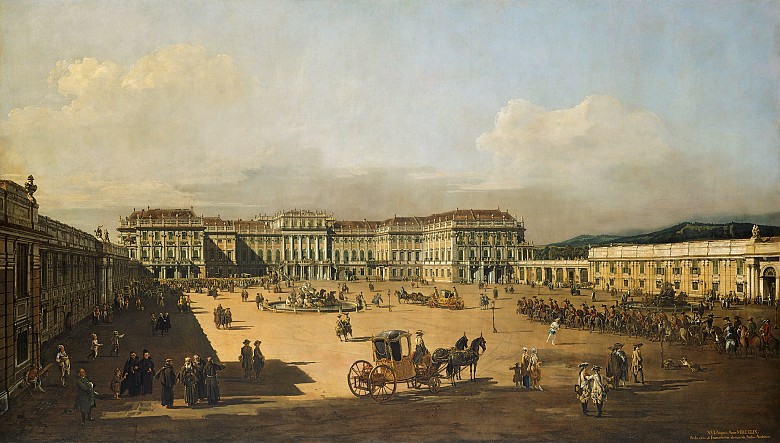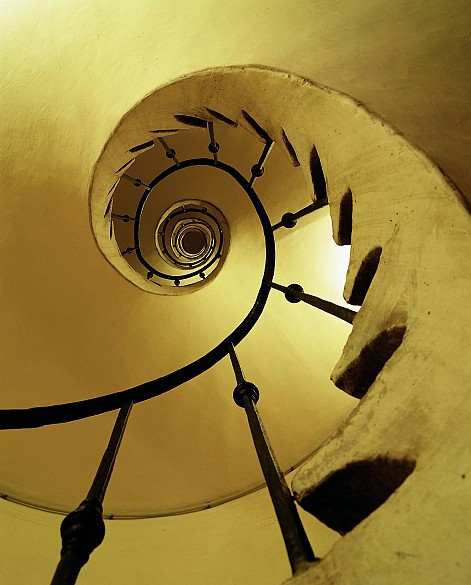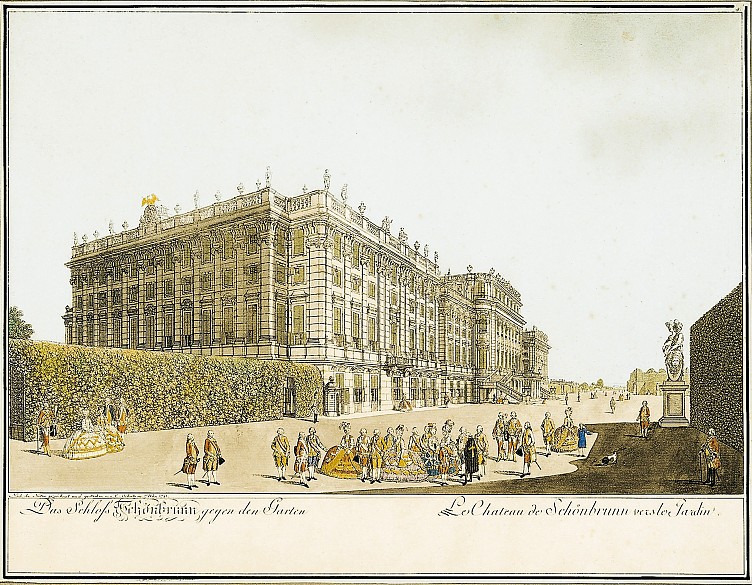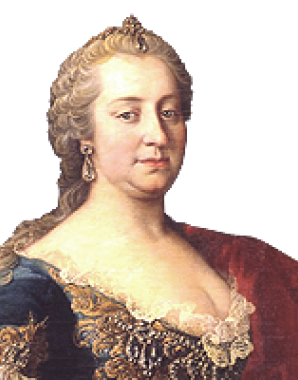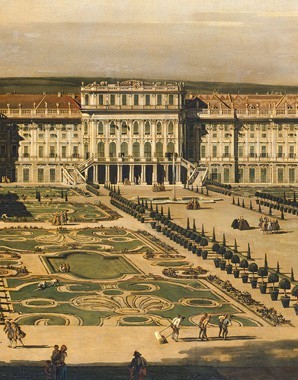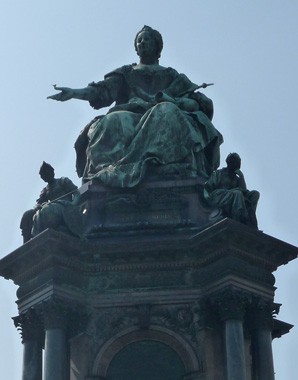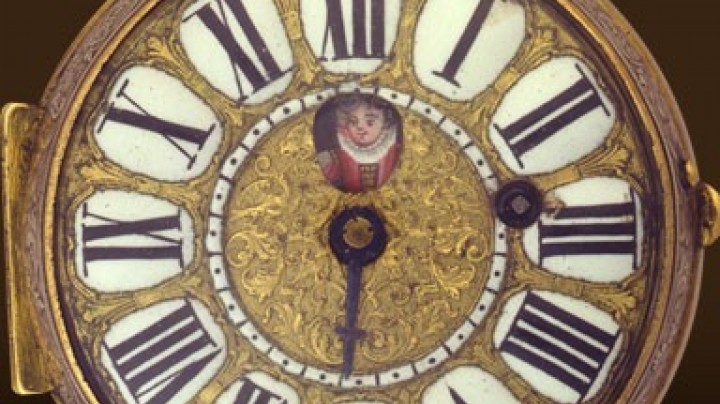A myth is created – Maria Theresa and Schönbrunn
Schönbrunn was Maria Theresa’s life work. The Rococo Gesamtkunstwerk (synthesis of the arts) we see today must have seemed to contemporaries like a never-ending building site, as Maria Theresa left hardly a stone standing. By the end of her life, Schönbrunn had become a monument to the ‘Great Empress’.
In 1743, at the very beginning of her reign, she decided to have the existing complex of buildings at Schönbrunn remodelled as her residence. Started as an ambitious project in an earlier age, it had later been abandoned half-finished. Despite the costly wars that the young monarch was forced to wage in defence of her succession, funds for her favourite project were always forthcoming.
The remodelling of the palatial complex took place in several stages and entailed a radical reorganisation of the interior space. The central wing of the palace was totally altered with the construction of the Great Gallery. These alterations demanded precise planning, as the building work had to take the routines of Court life into account. The Court architect in charge of the project, Nikolaus Pacassi, deferred to the tastes of the impatient monarch, realising her ideas quickly and cost-effectively. He was regarded as an organisational talent who prioritized economic concerns over artistic originality.
Maria Theresa took a characteristically pragmatic approach to the constraints imposed by the existing structural dimensions, with utility representing the foremost priority. Since there was a chronic lack of space due to her rapidly expanding family, larger rooms were subdivided and a mezzanine floor was even inserted between the first and second floors. While the resulting reduction in the dimensions of the individual rooms was seen as a serious deficiency by some of Maria Theresa’s contemporaries, today this tends to be interpreted as the ‘motherly’ Empress’s predilection for domestic comfort, anticipating the concerns of the Biedermeier era.
The spirit of Maria Theresa and Schönbrunn as the architectural testimony of the epoch of the Habsburg ‘Supermother’ continued to have an effect as programmatic precepts for the succeeding generations of the dynasty, particularly as manifested in Franz Joseph’s strong ties with Schönbrunn, which can be seen as the architectural counterpart of his neo-absolutist policies. The ‘Old Gentleman at Schönbrunn’ was eventually to become a monument to himself …
